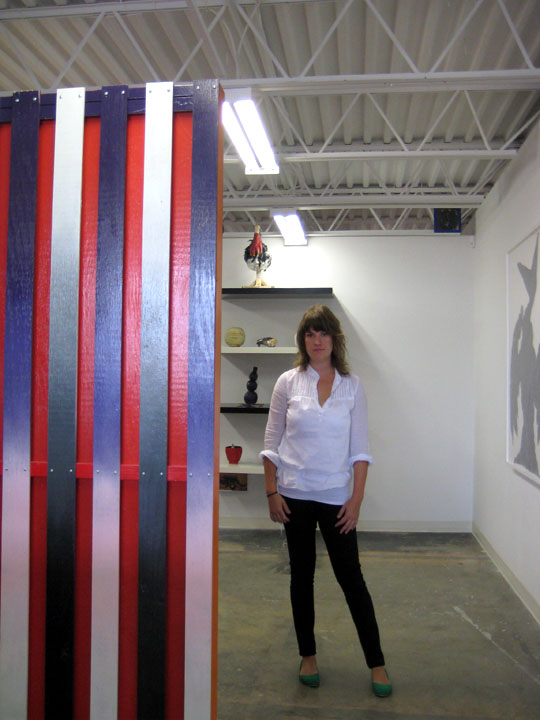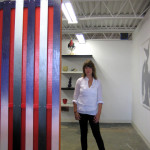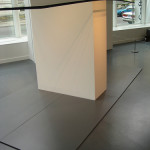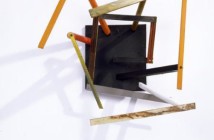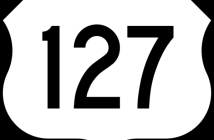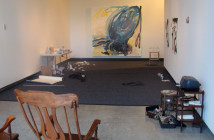INTERVIEW WITH EMILY ISENBERG
I got to know Emily Isenberg in our brief but memorable crossover in Portland, OR. I had just moved to town and a mutual friend thought we should meet. This friend however, did not know I had recently re-located to Portland, so it was with delight and surprise to find I had a Boston connection just coming into town. We hung out regularly, talking about art, artists, markets, the scenes of Boston and Portland, etc. Having only been here a year, Emily had already established herself as one of the top Directors in town, managing the respected Elizabeth Leach Gallery. I immediately responded to her insatiable quest in networking, her sense of humor and how articulate she was about what made an interesting gallery program. When Russell LaMontagne quietly announced he was opening a gallery in Boston, Emily became a perfect choice for Director. I cannot imagine anyone more intelligent, deserving and qualified to run a gallery dedicated to emerging artists. So it was with sorrow that Emily left the great city of Portland, however, Boston should feel lucky. In a city where some of the top galleries have closed, LaMontagne Gallery is now better positioned than anyone in Boston to become the leader in a rapidly changing scene.
I caught up with Emily over email to talk about the space, its direction and two of my favorite topics: money and art. Enjoy!
Micah Malone: I was thinking about the panel discussion we recently attended at the Museum of Contemporary Craft. I was struck by the curator’s insistence that Melissa Dyne’s piece was not for sale! While it may not have been for sale through the museum, certainly it was marketable. However, what troubled me was the implication that its theoretical status of “not for sale” somehow brought greater value to the work.
With this in mind, I thought we could start by talking about money and how that affects artwork. Not just economically but, perhaps more importantly, the perception of “value” in art.
Emily Isenberg: First off, I must mention how odd that comment was, I mean what is a curator doing talking about the monetary value of an art piece to describe it's relevancy. Since when did the curator become a dealer? HA. Two totally different animals as far as I am concerned.
So I think the awe of the unsaleable OBJECT has a different cache, but in this particular case, Melissa Dyne's piece, even though tangible, was knowingly conceived to bend or break. Is taking 400 pounds of industrial glass and balancing it on a small white wall a study in physics? Or sculpture? Or performance?
There is an altruistic idea about the unsaleable, art made for art sake. Land art, art made for an experience, per example Walter De Maria's “Lightening Field”, intended to be closely watched and slowly observed over stretches of time. Yet can't be contained and if I recall correctly photography isn't allowed... so there is NO real piece that can be contained besides the watching unto itself.
On another note, a prominent Portland based collector was inquiring about placing this piece in her garden. Which raises a whole other batch of questions, regarding buying an idea or a process knowing it's precariously doomed to fail.
So addressing your question regarding sales and how it determines "value" is a weighty concern. I don't have a clear response; but I can remark on some interesting trends... In the art fair circuit it has become more common for Galleries to go to fairs with sold pieces on the walls of their booth. This presents a "you can look, but can't have" mentality. The psychology of this being that what IS available will be sold quickly and impulsively. I think there is something a little dishonest about it, frankly.
Also the whole notion of announcing sold work during an exhibition is obnoxious in another right, because the body of work becomes a constellation of red dots (or in some PDX cases, the Gold stars) that cultivates a curious viewer who is considering the price, and the buyer at the first initial experience they have with the work.
MM: I think my problem with the curator’s comment was that it ghettoized her efforts as an artist. She was playing the card that the art would have a better altruistic value (and more cache for the museum) if it couldn’t be sold. However, I felt Dyne’s piece was not only tangible, but also sellable, and the museum should do what they can to expedite any transaction!
Even for all of Land Art’s notions of being uncontained, there are certainly ways to make money from them. I wonder how many people buy James Turrell skyboxes simply because of his reputation for carving up a crater?
There are so many inventive ways to distribute artwork and a million other ways to make money from that distribution. With that said, I do find a difference in how dealers market work and when artists set up difficult situations for the work’s distribution. Your observation about galleries showing sold work is, indeed, suspicious. There is an interesting dynamic between that and say, Tino Sehgal’s performance/situation work, which cannot be photographed or documented in any way, but yet, sells quite well at fairs! Do you see both of these scenarios on the art fair circuit? The aggressive selling (and perhaps shameless arrogance) vs. work that looks so impossible to buy but manages to sell anyway?
EI: That is a good point regarding James Turrell. At times they start to feel like 3d holograms or post cards, smoke and mirrors all merited by a huge rock outside of Flagstaff.
Another confusing idea: During Art Chicago this April I saw at least 3 photographers exhibiting their own photos of Berlin artists Michael Elmgreen and Ingar Dragset air tight Prada store that sits 26 miles from MARFA, TX.
How does this work? What are they selling? Their image of a sculpture that is made by another artist that is basically a high falutin fabrication of a ready made of an Italian fashion label? This gets confusing.
And on the same coin, there is a bandwagon mentality that happens with artists like Tino Sehgal. It may not be a tangible thing like a painting, but there is a club mentality, and collectors like to be a part of it, especially if the curators are talking about the work.
There is a certain cache about collecting this kind of work, don't you think? It also is very common that when one collector buys on the first day of a fair, then they tell their friends what they bought...you guessed it... it's as synonymous as Guess jeans in middle school.
You can never tell how the market will work, or what will draw people in.
Overall though, if you believe in what you are showing, and have faith in the maker it will all come in time. I know some very successful artists that for years couldn't move one thing at NADA, or even the ARMORY, and only a few years later have a lengthy waitlist before the gallery exhibitions open.
Per example, Ryan McGinley.
MM: Yes, I think there is a cache to collecting difficult types of work. It is also true that collectors buy in herds to be part of a club, in some ways just like artists. I have always joked that I chose not to go to NYC because it felt like a trap, like I was packaging myself and being round up with the herd under the label “New York Artist”. That being said, it is incredibly difficult to distinguish artists these days no matter where you live or what you do. It often feels that artists are in parallel worlds with each other, making distinction a hard thing to come by. With that in mind, how do you go about choosing artists to represent? What makes you believe in a particular artists work?
EI: The New York package deal...I remember this. We came up with the whole thing, work in Chelsea, live in Greenpoint, eat at Enids on Sundays...etc, etc. I do sometimes envy the community and rigor that exists there, but then I see a tree lined Boston Street and quickly forget.
Regarding representation, we are just considering what it means to represent an artist. In our first year we wanted to give ourselves a lot of opportunities to take risks and begin different kinds of relationships. We are planning on announcing a couple of artists we want to make a larger commitment to by the end of 2008.
I think that we are excited to work with artists that have an intense work ethic, and constantly asking questions about their process, and making new discoveries about the directions things naturally move. When an artist is making the work they enjoy to make, the response can be remarkably smart and sincere.
MM: Tell me more about this wonderful project of knocking down “social barriers of inclusion and exclusion” through hot dogs…
EI: I think it was a piece of the Portland spirit I really missed when I moved back to Boston. There is a much stronger divide within different sects of the art community here then I experienced living in Oregon.
I am not sure exactly why that is, there is a pioneering spirit to the Pacific Northwest in general... but art folks have a different level of accessibility that is unparalleled...which can be lacking in Boston's fighting Yankee spirit. Don't you think?
The event sprung from the desire to get folks together, which are working in similar ways within the same community, but haven't had the opportunity to meet each other. Reducing things down to the most common denominator of sharing food and ideas.
Overall it has been remarkably successful, every week had a completely different draw, and feeling. We are already starting to plan next summers roster of hosts, and there are definitely a few eyebrow raisers in
the bunch.
MM: In terms of location, Both Portland and Boston are outside of the vortex. What kind of advantages do you think these cities have to offer as opposed to "going with the herd" to NYC? Is it difficult to compete with other galleries that can seemingly offer instant cache by simply being in a particular neighborhood or city?
EI: It's hard to say how I compare the scenes, for one I think artists, curators and dealers are held more accountable in Boston. There is a certain work ethic and pride that is inherent in the northeast. On the other hand there is an ease to Portland that cultivates a certain level of experimentation and freedom that is hard to come by in Boston.
In regards to them both being little brother cities, looking up to Seattle, or down to NY there are pluses and minuses... Let's focus on the big plus, it's easier to get attention for what you are doing because people are so anxious for something new or different (what they choose to do with that is a different story). Also, the accessibility to larger markets while still being able to enjoy the quality of life of a slightly different pace, and smaller community is desirable.
MM: What is the best artwork you’ve seen in the last year? and lastly… What is the most expensive piece of clothing you’ve ever bought?
EI: hmm, the best exhibition I saw in the last year was hands down Urs Fisher’s exhibition "you" at Gavin Brown. Fischer excavated the main gallery into a crater. It was one of the most successful pieces of earthworks I have seen in years, and it was boldly contained inside. It felt sneaky, precarious and a bit dangerous to walk through it, requiring some trust to get inside, and when I did, it felt ominous and sacred.
Regarding the most expensive thing I have ever bought... First off you have to share yours, unless it changed. I love how after all of that, it ripped.
Well, it is a bit embarrassing because I ended up getting stood up... but I bought a Moschino dress (on sale) for a wedding this summer. I imagine he would be kicking himself right now, if he saw this dress.
- Emily Isenberg in LaMontagne Gallery with a piece by Jacques Louis Vidal.
- Melissa Dyne, Glass, Industrial pane glass on wood, 2008.
- The storefront in the heart of Southie where LaMontagne Gallery is located.
Jacques Louis Vidal: "I make my Own Luck" and Paul Waddell: "You Know You're Right" are currently on view at LaMontagne Gallery from September 12- October 12, 2008
All images are courtesy of LaMontagne Gallery and Museum of Contemporary Craft.

